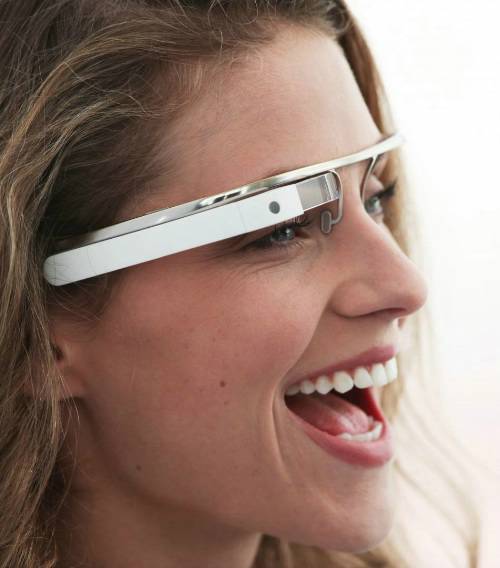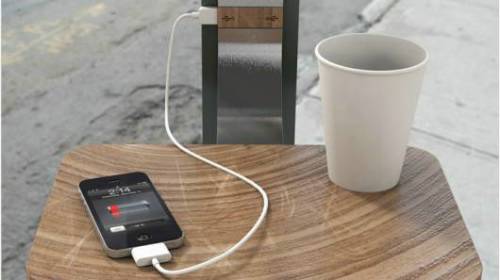By Sam Richardson
Project Glass
 Project Glass is something that Google have been developing. The ‘Augmented Reality’ glasses project images onto the lens that appear directly within your vision. Imagine being on the morning train to Liverpool Street with your arms so tightly packed in you can’t pick your nose let alone write an E-Mail. Then imagine a Smart Phone right in your face- E-mails, Internet, Phone Calls and Picture taking all hands free. Although still in the early stages of development, a video was posted onto YouTube http://bit.ly/Ho7sZg with the title ‘One day...’ showing how Google hope and pray this project will work out. I really recommend taking a look at the video (and the many parody videos of wearers walking into people and posts). Personally, I’ve always wanted to be Iron Man and having a digitalized display right in my face would take me one step closer. Project Glass is something that Google have been developing. The ‘Augmented Reality’ glasses project images onto the lens that appear directly within your vision. Imagine being on the morning train to Liverpool Street with your arms so tightly packed in you can’t pick your nose let alone write an E-Mail. Then imagine a Smart Phone right in your face- E-mails, Internet, Phone Calls and Picture taking all hands free. Although still in the early stages of development, a video was posted onto YouTube http://bit.ly/Ho7sZg with the title ‘One day...’ showing how Google hope and pray this project will work out. I really recommend taking a look at the video (and the many parody videos of wearers walking into people and posts). Personally, I’ve always wanted to be Iron Man and having a digitalized display right in my face would take me one step closer.
Brainput
Massachusetts Institute of Technology and Tufts are experimenting with technology that can give computers an insight into how the user is thinking. The ‘Brain Scanner’ is designed to recognize when a person has a heavy workload and then automatically modify the computers interface to make everything easier. The technology is  called ‘functional near-infrared spectroscopy’ or fNIRS and a computing system with Brainput could effectively learn to give the user a break during heavy workloads. An experiment involving a person navigating two robots through a maze simultaneously, showed that when the robots realised- by way of the fNIRS technology, that the driver was having to multitask, they took on more of the navigation themselves. The Brainput team believe this technology could lead into the automotive and aviation industries. called ‘functional near-infrared spectroscopy’ or fNIRS and a computing system with Brainput could effectively learn to give the user a break during heavy workloads. An experiment involving a person navigating two robots through a maze simultaneously, showed that when the robots realised- by way of the fNIRS technology, that the driver was having to multitask, they took on more of the navigation themselves. The Brainput team believe this technology could lead into the automotive and aviation industries.
Google Driverless Car
Google are at it again with Driverless Car technology. The system combines information gathered from Google Street View with artificial intelligence software, this combines input from video cameras and sensors in and around the car to specify the vehicles position on the map. The vehicles are in testing now and Nevada has even passed laws for Driverless Cars to be allowed on the road. A Toyota Prius modified with the Google technology was licensed in May 2012 and is the first license issued for a self-driven car. The hope is that traffic related injuries and deaths will be reduced. Chauffeur driven home after one too many gin’s doesn’t seem to be on the cards yet but we can all hope!

Microsoft Home of the Future
 Inside its headquarters Microsoft has a state of the art home with all of the mod cons they believe will be implemented into people lives in the near future. They envision a future where everything is connected to the ‘cloud’ and that your home will effectively learn your habits and routine. Hundreds of tiny sensors around the home could conceivably track everything from whether your favourite suit is at the dry cleaners, whether a plant needs more water or light, knowing what is in your fridge and cupboards and finding recipes that you love. Anytime a food runs low, you’d receive a shopping list direct to your phone. The house could also have a disembodied voice that could read out those recipes whilst you cook, wake you up in the morning, tell you your daily schedule and then transfer all of the information you need over to your phone and computer. There would be no more worrying over an unlocked door or open window as your super advanced housekeeper would be able to close them as soon as it realises you forgotten to close them yourself. Inside its headquarters Microsoft has a state of the art home with all of the mod cons they believe will be implemented into people lives in the near future. They envision a future where everything is connected to the ‘cloud’ and that your home will effectively learn your habits and routine. Hundreds of tiny sensors around the home could conceivably track everything from whether your favourite suit is at the dry cleaners, whether a plant needs more water or light, knowing what is in your fridge and cupboards and finding recipes that you love. Anytime a food runs low, you’d receive a shopping list direct to your phone. The house could also have a disembodied voice that could read out those recipes whilst you cook, wake you up in the morning, tell you your daily schedule and then transfer all of the information you need over to your phone and computer. There would be no more worrying over an unlocked door or open window as your super advanced housekeeper would be able to close them as soon as it realises you forgotten to close them yourself.
Street Charge
 This one seems rather pointless but we have all at one time or another needed to make an important phone call but alas, our silly iPhones refuse to stay charged for more than 38 minutes. Well some boffins at Pensa have decided that street lamps and bus stops can be turned into a charging station for our phones. It’s a rather simple idea- strap a solar panel to the top, add some cables and a USB port and there you have it. Some concept images from the team look great with a surface to rest your phone, coffee or whatever else you have with you. Redesigning some ugly street furniture into part of our ever increasingly connected world is a nice idea but there is the small trouble of vandalism that could curtail the idea before it has really left the ground. Add some free Wi-Fi and we might be interested. This one seems rather pointless but we have all at one time or another needed to make an important phone call but alas, our silly iPhones refuse to stay charged for more than 38 minutes. Well some boffins at Pensa have decided that street lamps and bus stops can be turned into a charging station for our phones. It’s a rather simple idea- strap a solar panel to the top, add some cables and a USB port and there you have it. Some concept images from the team look great with a surface to rest your phone, coffee or whatever else you have with you. Redesigning some ugly street furniture into part of our ever increasingly connected world is a nice idea but there is the small trouble of vandalism that could curtail the idea before it has really left the ground. Add some free Wi-Fi and we might be interested.
|

